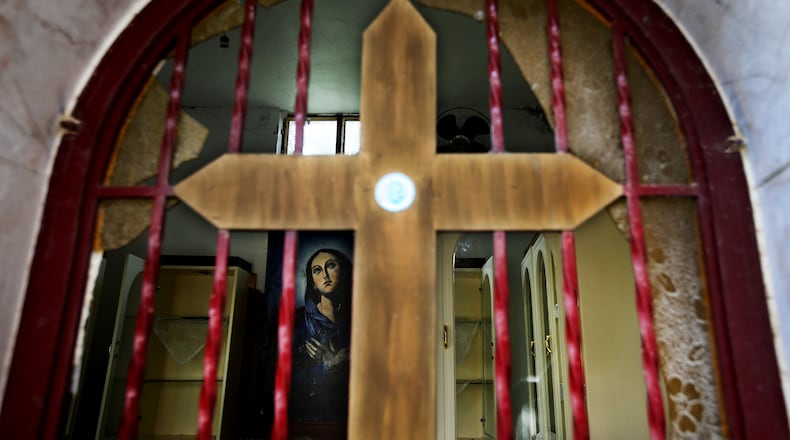From the Pew Research Center, based on a 2014 survey of more than 35,000 Americans:
Moreover, these changes are taking place across the religious landscape, affecting all regions of the country and many demographic groups. While the drop in Christian affiliation is particularly pronounced among young adults, it is occurring among Americans of all ages. The same trends are seen among whites, blacks and Latinos; among both college graduates and adults with only a high school education; and among women as well as men."
The numbers are pretty startling:
In the seven years since Pew last conducted such a poll, the percentage of Americans who described themselves as Christian dropped by almost eight percentage points, from 78.4 percent in 2007 to 70.6 percent in 2014. It dropped in raw numbers as well, with 5 million fewer Americans identifying themselves as Christian even as the overall population increased.
And that decline was driven not by a major increase in non-Christian faiths such as Buddhism or Islam, but by a 6.7 percentage-point jump in the number of Americans who professed no religious affiliation at all.
The percentage of Americans who described themselves as Protestant dropped 4.8 points; the percentage who described themselves as Catholic dropped 3.1 points. The percentage of self-identified evangelical Christians was more stable, dropping by just 0.9 percent, but Pew reports that "the share of evangelical Protestants who identify with Baptist denominations has shrunk from 41 percent to 36 percent."
And again, these changes have occurred over a seven-year period, a relative blink of an eye in the time frame in which such changes normally play out.
Meanwhile, the number of "religiously unaffiliated" jumped by 19.7 million.
Such changes are being driven primarily by young people of every ethnic and income group. As older, more religious Americans die, they are replaced by grandchildren and great-grandchildren who are less likely to share their faith. Or as Pew bluntly describes the process, "generational replacement."
Note the numbers in the two far-right columns: Barely half of millennials identify as Christian. Thirty-six percent are unaffiliated.
The news looks particularly dire for American Catholics:
"Nearly one-third of American adults (31.7%) say they were raised Catholic. Among that group, fully 41% no longer identify with Catholicism. This means that 12.9% of American adults are former Catholics, while just 2% of U.S. adults have converted to Catholicism from another religious tradition. No other religious group in the survey has such a lopsided ratio of losses to gains."
Not surprisingly, the South boasts the lowest percentage of religiously unaffiliated of any region in the country, as well as the highest percentage of evangelicals. However, it is hardly immune to the overall trend. In 2014, 19 percent of Southerners said they had no religious affiliation, up from 13 percent just seven years earlier. At that rate, the religiously unaffiliated will become a majority here in the South in a little more than a generation.
Such data express in hard numbers what many religious leaders have witnessed from their pulpits each Sunday: a lot of empty pews and gray heads. It also helps to explain the growing sense among some Christian faiths that they are under attack by unseen forces. In a sense they're right, but to the degree that they identify their enemy as governmental or political in nature, I suspect they badly misread the situation. The problem is much closer to home.
Mike Huckabee, for example, is trying to build his presidential campaign around the ludicrous idea that "we are moving rapidly toward the criminalization of Christianity." Jeb Bush, in his commencement address at Liberty University last week, offered a slightly more nuanced version of that theme.
But as the Pew data document, the primary threat faced by religion in general and the Christian faith in particular does not come in the form of gay people who wish to marry and need a wedding cake, or of Obamacare contraceptive requirements. Nor can it be fixed with something as mundane as a "religious freedom amendment." Those are, or ought to be, of microscopic importance given the scale of the shift now underway. They are simply means by which the blame can be projected onto secular forces and away from where it really lies.
The greatest threat to the continued and ultimately valuable role of faith in American life is that fewer and fewer Americans, particularly young Americans, are finding value and connection in places of worship. That's what the numbers tell us, in plain and simple fashion, and that is a failing that only places of worship can address.
About the Author





